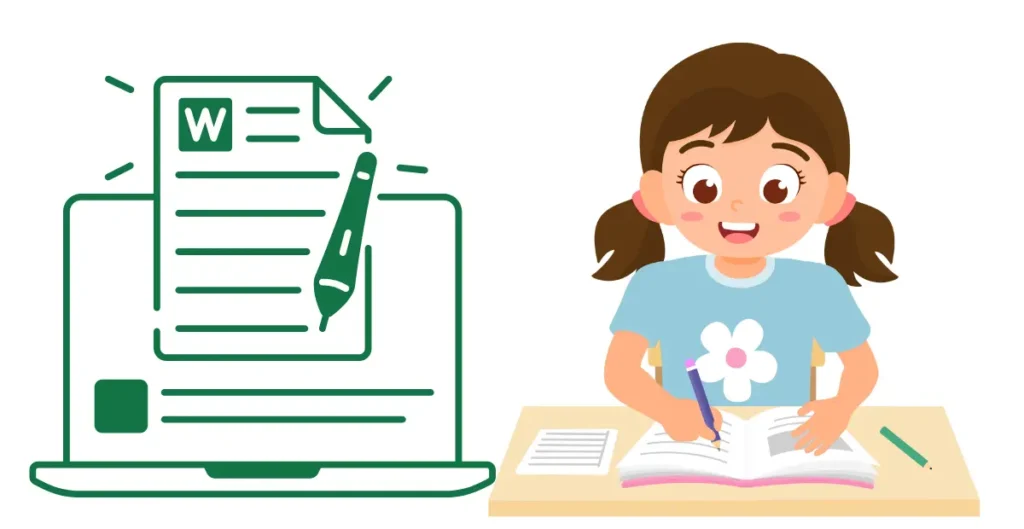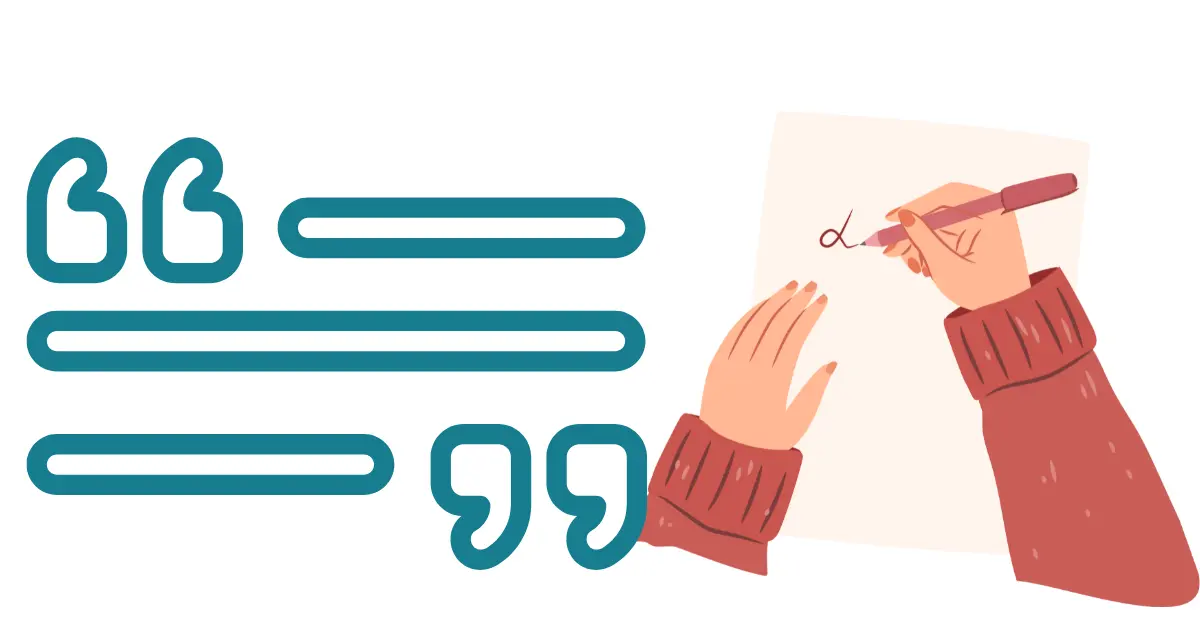Introduction
A small paragraph is not only a few lines but also a work that calls for simplicity, conciseness, and a call to action. In a globalized environment characterized by constant information availability, readers look for brief materials they can comprehend. Often, I discovered that even a short paragraph written with great attention to conciseness could grab the reader’s attention, keep it focused, and provide the value of an entire page or even an article in just a few lines.
Consider headlines, blog posts, captions under social media posts, or even formal documents: these all depend on concise text to convey their message effectively. Understanding the necessity of short paragraphs in writing is not ornamental but about meeting the audience’s needs. This article will explore how to master this important skill!
What Makes a Small Paragraph “Perfect”?
Key Characteristics of an Effective Small Paragraph
A small paragraph stands out because it focuses on one idea, is clear, and uses precise language. Here are the qualities that make it shine:
- Focus on One Idea: Each short passage should revolve around a single thought or topic. This keeps the message clear and avoids confusing the reader.
- Concise Language: Use compact content with words that add value. Avoid filler phrases or overly complex terms.
- Engaging Structure: Begin with a strong opening sentence, add a few supporting details, and finish with a memorable conclusion.
- Readable Length: An effective mini-paragraph contains 2-4 sentences, making it easy for readers to digest.
Clarity is the key to impactful writing. A short paragraph can achieve this better than a lengthy one.
Common Mistakes Writers Make with Small Paragraphs
Writers often struggle to create impactful short paragraphs due to the following pitfalls:
- Overloading with Information: Avoid cramming multiple ideas into a single brief paragraph.
- Lack of Clarity: Without a clear natural language structure, the message becomes confusing.
- Poor Flow: Ensure semantic relationships between sentences to maintain a logical flow.
Focus on sentence breakdown to make each part of your small text section meaningful and engaging.
The Benefits of Writing Small Paragraphs
Improved Readability for Online and Offline Content
Short paragraphs make content approachable, especially for online readers who skim rather than read word for word. By using short-form content, you:
- Enhance Readability: A concise text block helps readers grasp your point quickly.
- Retain Attention: Readers are less likely to abandon your content when it’s easy to follow.
- Encourage Engagement: Bite-sized condensed information invites readers to interact, whether by commenting, sharing, or liking.
Enhancing Engagement by Breaking Down Information
Breaking down information into succinct writing improves comprehension and aligns with text segmentation strategies. For example:
- Use bullet points for clarity.
- Divide complex topics into multiple mini paragraphs for better flow.
Localized Example: In India, where mobile readership dominates, short paragraphs ensure users don’t lose interest while scrolling.
How to Write a Perfect Small Paragraph
Choosing the Right Topic or Idea
Every great short paragraph begins with a focused topic. Here’s how to choose effectively:
- Identify Your Main Idea: Keep it simple and narrow. For example, instead of discussing “environmental conservation,” focus on “reducing plastic waste.”
- Apply Contextual Relevance: Use contextual text analysis to understand your audience’s needs and tailor your message.
Practical Tip: When brainstorming topics, ask yourself, “Can I explain this in three sentences?” If not, break it into smaller parts.
Using Concise and Impactful Language
The secret to how to write a short paragraph effectively lies in your word choice. Opt for:
- Action-Oriented Verbs: Replace weak phrases like “was going to” with “planned.”
- Specific Details: Instead of saying “a lot of people,” specify “1,000 attendees.”
Tips for Structuring a Small Paragraph

The Ideal Length for a Small Paragraph
While there’s no universal rule, most experts agree that a small text section should have 2-4 sentences. This keeps the content digestible without oversimplifying.
Best practices for structuring short paragraphs include:
- Start Strong: Use an opening line that hooks the reader.
- Provide Value: Add supporting details that enrich the main idea.
- End Memorably: Conclude with a thought-provoking statement or call to action.
Example:
- Too Long: “The new library offers various facilities, including study rooms, computer access, and a large collection of books, making it a great place to study.”
- Revised: “The new library’s study rooms, computers, and extensive book collection make it perfect for students.”
Balancing Simplicity and Depth in Your Writing
To strike a balance, consider these strategies:
- Focus on One Key Idea: Avoid cramming too much into one short passage.
- Use Transitional Words: Smooth transitions like “however,” “in addition,” and “therefore” guide readers through your points.
- Incorporate Data: Provide specific examples or statistics for credibility.
An example of Transition is: “Many students struggle with time management. However, small changes like setting daily goals can make a big difference.”
Examples of Small Paragraphs That Deliver Impact
Real-Life Samples of Effective Short Paragraphs
Great short paragraphs often come from everyday examples. Consider this:
- Informative: “Proteins, vegetables, and fruits are essential parts of a balanced diet. This combination supports energy levels and overall health.”
- Inspirational: “Every small step counts. Whether it’s saving $1 a day or walking 10 minutes, these actions lead to big changes over time.”
These examples demonstrate how to write a short paragraph effectively by keeping them concise and meaningful.
Analyzing What Makes These Examples Stand Out
The success of these examples lies in the following:
- Clarity: Each tiny paragraph delivers a clear message.
- Focus: They stick to one idea without veering off-topic.
- Readability: Text segmentation makes them easy to follow.
Use tools like Hemingway Editor to check the readability of your brief paragraphs.
Small Paragraphs in Digital Content Writing
Why Short Paragraphs Work Best for Blogs and Articles
For blogs and articles, short paragraphs enhance the reader experience. Platforms like Medium and WordPress recommend using short passages for better engagement. Benefits include:
- Scannability: Readers can quickly find key points.
- SEO Value: Search engines favor content with short-form content that aligns with user intent.
- Mobile Friendliness: On small screens, compact content ensures readability.
Adapting Your Writing Style for Social Media Platforms
On platforms like Instagram or Twitter, short paragraphs dominate. Here’s how to tailor your writing:
- Start with a Hook: Capture attention in the first sentence.
- Be Visual: Combine your small text sections with images or emojis.
- Keep it Relatable: Use conversational tones that resonate with your audience.
Localized Example: In Australia, where storytelling is popular on social media, combining mini paragraphs with personal anecdotes engages readers effectively.
Using Small Paragraphs to Enhance SEO
The Role of Small Paragraphs in Optimizing Content
Search engines prioritize readability, making short passages crucial for SEO. Here’s why:
- Improved Dwell Time: Readers stay longer when content is digestible.
- Keyword Integration: Placing keywords like how to write a short paragraph effectively naturally improves rankings.
- Enhanced User Experience: Condensed information aligns with what readers and search engines expect.
How Small Paragraphs Boost Dwell Time and User Experience
A well-structured small text section not only keeps readers engaged but also reduces bounce rates. Techniques to achieve this include:
- Highlight Key Points: Use bold or italic text for emphasis.
- Incorporate Lists: Break up blocks of text to maintain interest.
Common Challenges and How to Overcome Them
Striking the Balance Between Short and Informative
Writers often worry about oversimplifying their content. To balance brevity and depth:
- Stick to the Point: Focus on one topic per short passage.
- Add Supporting Examples: Use localized anecdotes or data to enrich your writing.
- Edit Ruthlessly: Trim unnecessary words to create concise text blocks.
Avoiding Over-Simplification in Short Paragraphs
Avoid making your tiny paragraphs too essential. Instead, add depth by:
- Explaining Context: Provide background where necessary.
- Linking to Resources: Guide readers to explore further with helpful links.
Always review your work to ensure each mini-paragraph adds value and context to the overall content.
Tools and Resources to Improve Your Writing
Recommended Apps for Grammar and Readability
Enhance your writing with tools that focus on natural language structure and contextual text analysis:
- Grammarly: Ideal for spotting errors and improving readability.
- Hemingway Editor: Highlights complex sentences and suggests simpler alternatives.
- Yoast SEO: Analyzes your text for SEO optimization.
Online Writing Tools for Structuring Small Paragraphs
The following tools make structuring small paragraphs effortless:
- Notion: Organize your ideas into clear, short-form content.
- Google Docs: Use the outline feature to map out your paragraphs.
- Scrivener: Perfect for planning and writing concise content sections.
Conclusion
Mastering the art of a small paragraph transforms your writing skills, making it clear, engaging, and reader-friendly. By focusing on brief writing, using precise language, and understanding the importance of keeping paragraphs short, you can deliver impactful messages in fewer words. Whether crafting blogs, articles, or social media posts, short paragraphs drive better readability, SEO optimization, and user engagement.
In my experience, breaking complex ideas into short paragraphs improves flow and leaves a lasting impression. Start applying these techniques today to captivate your audience. Ready to boost your writing? Let’s make every word unique!
Frequently Asked Questions
Why are small paragraphs important for readability?
Small paragraphs break information into digestible parts, improving focus and making content easier to skim. This keeps readers engaged and encourages them to continue reading.
How long should a small paragraph be?
A small paragraph should ideally contain 2-4 sentences. This ensures clarity and helps convey ideas without overwhelming the reader.
Can small paragraphs improve SEO?
Yes, search engines prefer concise, scannable content. Small paragraphs boost readability and engagement, which can improve rankings and reduce bounce rates.
What makes a small paragraph effective?
Focus on one idea, use concise language, and ensure a logical flow. Adding an engaging opening and a strong conclusion enhances effectiveness.
What tools help with writing small paragraphs?
Tools like Grammarly and Hemingway Editor refine grammar and readability. These tools ensure your small paragraphs are concise and impactful.
How do small paragraphs enhance user experience?
They improve scannability and keep readers interested by breaking complex information into manageable sections, enhancing overall content appeal.
How do I balance brevity and depth in small paragraphs?
Focus on one idea per paragraph, provide examples, and use transitions. Avoid cramming too much information while maintaining clarity and relevance.


